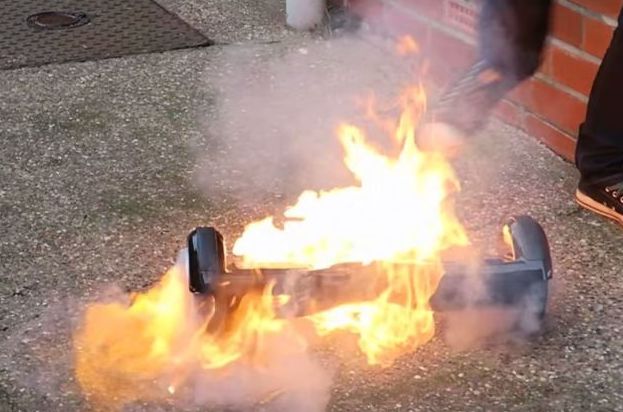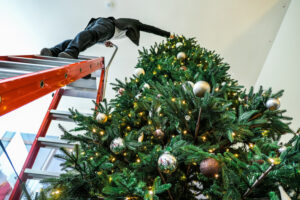Some interesting facts about hoverboards:
First, they don't hover- they roll on two wheels. Second, they have gained a reputation for catching on fire. As of mid-December, 2015, there were 16 hoverboard fires in 12 states being investigated by the U.S. Consumer Product Safety Commission. Several more were reported worldwide. Amazon removed many of them from its store at the peak of holiday shopping season. The fires have started in different circumstances, as well. According to owners and witnesses, some of the hoverboards exploded while charging, some while riding and one as it was apparently sitting near a kiosk in a shopping mall. What's going on with these devices? Why are they so dangerous?
Unfortunately the answer is frightening: there's no single reason why hoverboards are exploding, and there's no definitive way to avoid potential harm if you want to buy one. No particular brands of hoverboard are singled out — they appear to be manufactured in thousands of interchangeable factories overseas. The advice issued by fire departments and government agencies isn't likely to help. The problem isn't with the products themselves, but with their rechargeable lithium-ion batteries and defective battery chargers.
Lithium ion batteries contain cells at 4.20V each. Sheets of electric insulators separate the individual cells. When one or more of the insulating sheets are damaged through impact and/or overcharging, a short circuit occurs. The current flowing through them raises the temperature to the flash point of lithium leading to an intense fire.
Most of the fires seem to happen during charging because Lithium ion batteries cannot accept overcharge. Hoverboard chargers should contain a cut-off mechanism which detects when the battery is fully charged, and stop charging automatically. Defects in this cut-off can lead to overcharging and fire. Unlike similar batteries in cell phones, laptop computers, GPS units and other commonly used devices, hoverboard batteries can be more susceptible to damage. As users of hoverboards bump into things over and over, the batteries get banged up.
Experts recommend a few tips to help avoid fires involving hoverboards. Only purchase a hoverboard with a battery made by a well-known, top-tier producer (this isn't as easy as it sounds, as knock-off batteries can have a reputable brand's name on it). Before using or charging a hoverboard, the battery should be inspected for obvious damage. If the battery looks defective it shouldn't be used or charged. Charge the battery away from flammable materials. Don't leave the charger connected to the battery for extended periods of time. Follow all instructions given by the manufacturer. The most common advice, however, is waiting until the hype dies down to buy one. This will allow for government agencies to finish testing and make recommendations.
If you have a case or claim involving a hoverboard (or other consumer product) fire, contact CED Technologies to speak with one of our experts. CED has fire experts who are mechanical engineers, electrical engineers and material scientists that can help determine what happened . For more info, call 800-780-4221






